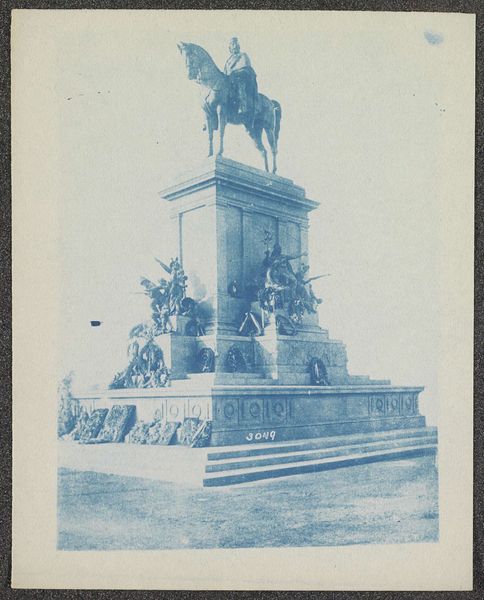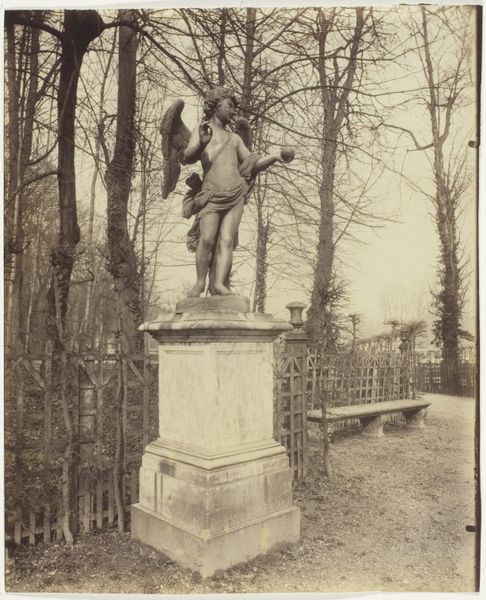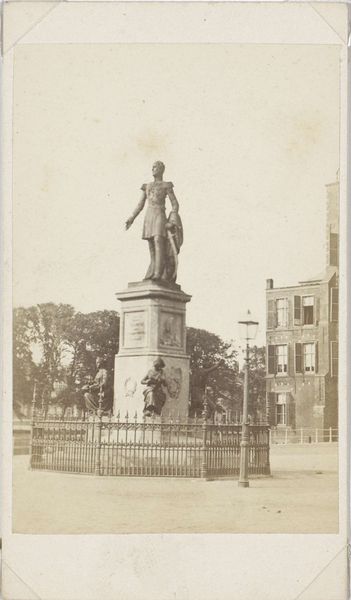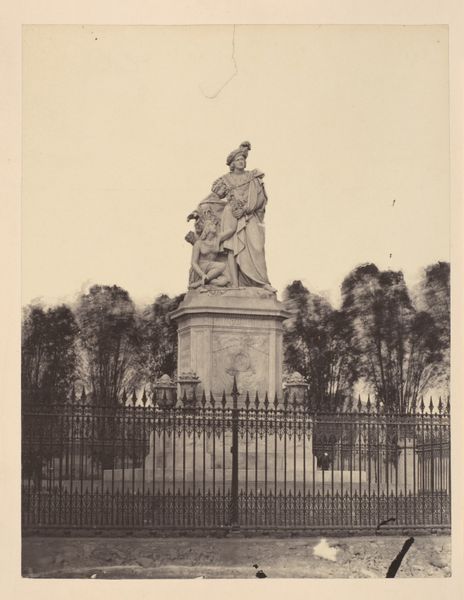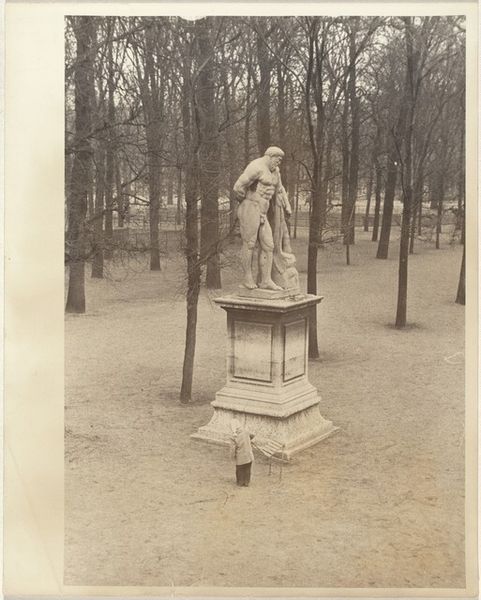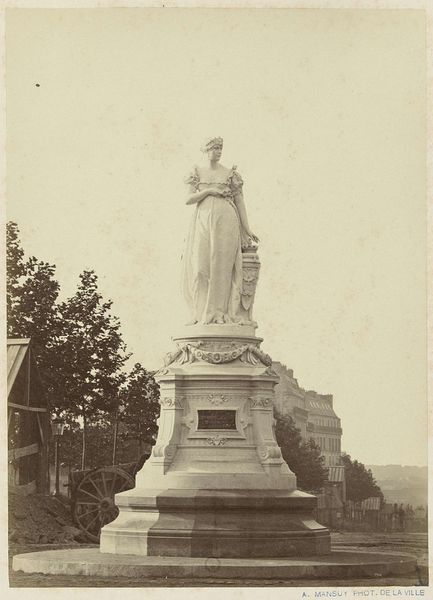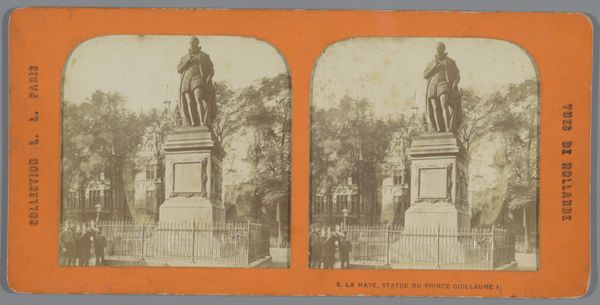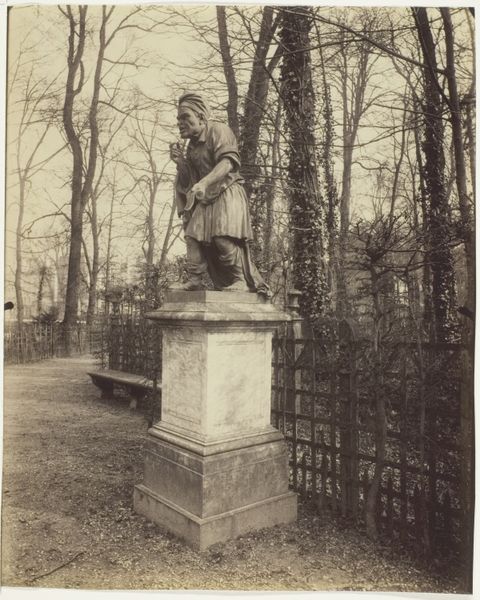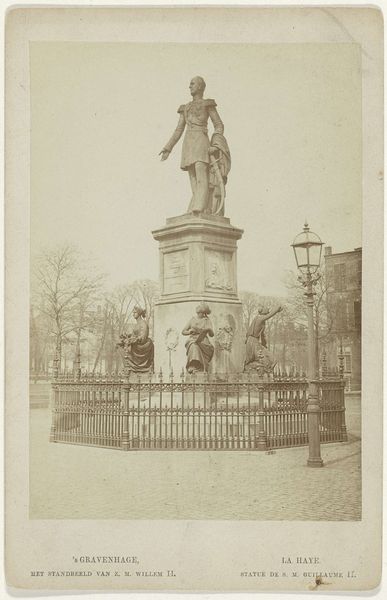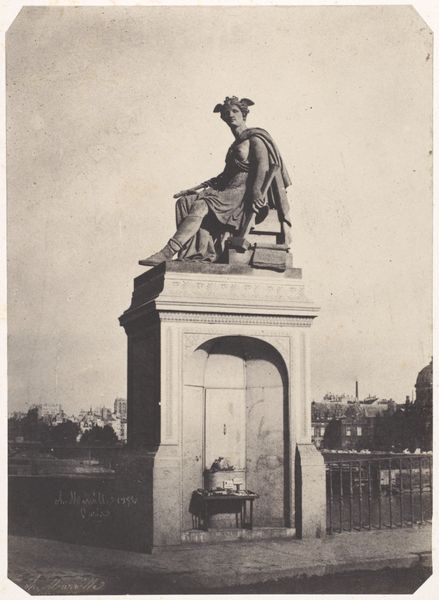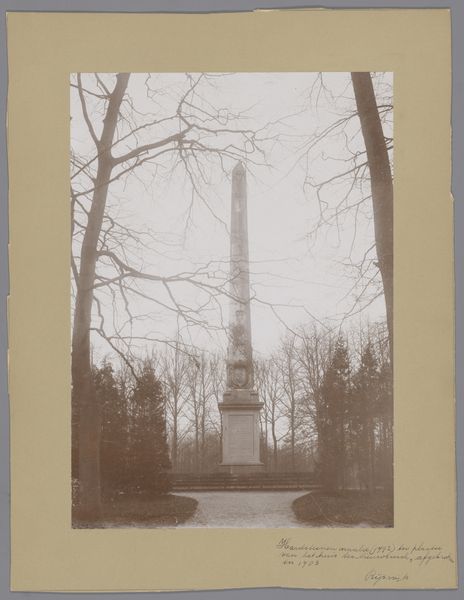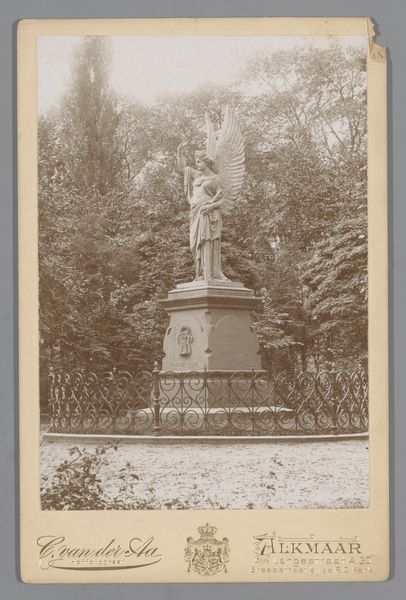
Standbeeld van Joost van den Vondel in het Amsterdamse Vondelpark c. 1900 - 1915
0:00
0:00
photography, sculpture
#
portrait
#
statue
#
landscape
#
photography
#
historical photography
#
sculpture
Dimensions: height 162 mm, width 125 mm
Copyright: Rijks Museum: Open Domain
Editor: This is an early photograph, circa 1900-1915, capturing the statue of Joost van den Vondel in Amsterdam's Vondelpark. The monochromatic tones and the presence of a figure in period dress lend the image a strong sense of history, and I find myself focusing on the interplay of light and shadow that sculpts the statue and its surroundings. What formal qualities stand out to you? Curator: Observe how the photographer utilizes the rigid, vertical lines of the fence to create a receding perspective, juxtaposed against the organic, rounded forms of the trees and sculpture. Notice also the tonal contrast, especially how the dark statue stands out against the lighter sky. The strategic arrangement emphasizes a visual hierarchy with Vondel at its apex. Editor: It’s fascinating how the photographer manipulates depth and form in a two-dimensional space to highlight certain features. But I can’t help but feel a little disconnected from the piece itself; it almost feels staged. Is that sense intentional? Curator: This tension is integral. The carefully arranged composition invites a certain kind of contemplation; the photographer wishes you to consider the statue as a formal object within its environment, mediating between its sculptural form and its contextual placement. The human figure acts as a scaling element, making you question your relationship to history and public art. What compositional techniques lead to that feeling of distance, can you see? Editor: Perhaps it’s the way the statue is framed, almost as an objectified monument. It does encourage you to dissect the separate formal qualities that all come together in one place. Curator: Precisely. In engaging with it formally, we can consider how the composition influences its reception, regardless of historical context. This helps the viewer approach the work through pure aesthetic engagement. Editor: I hadn’t thought about it like that before! Viewing the photograph in terms of just forms, lines and perspective really clarifies the artist’s intent in crafting that visual experience. Curator: And, in doing so, how that method helps you refine your viewing too.
Comments
No comments
Be the first to comment and join the conversation on the ultimate creative platform.
